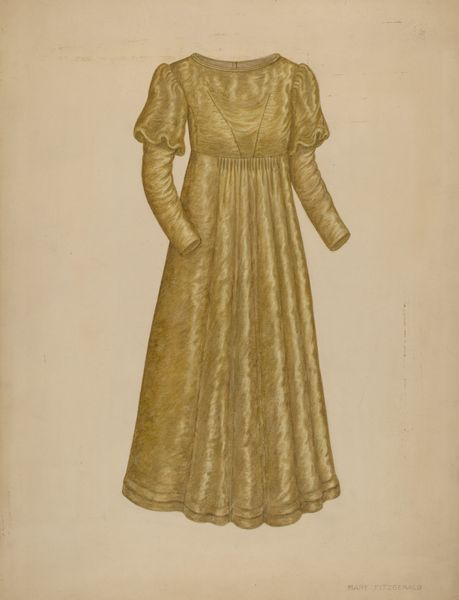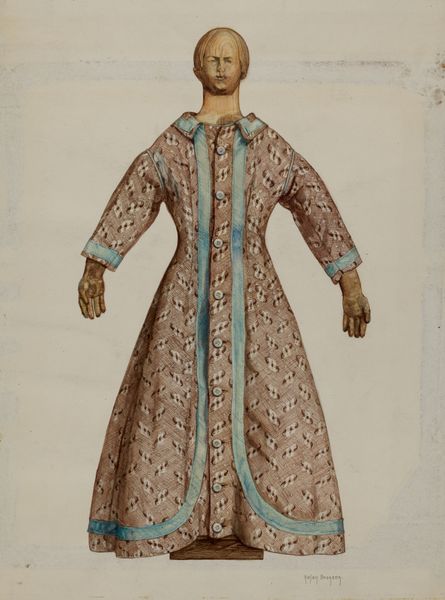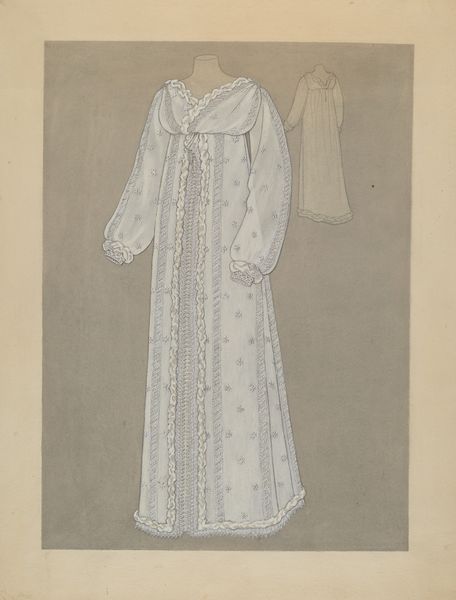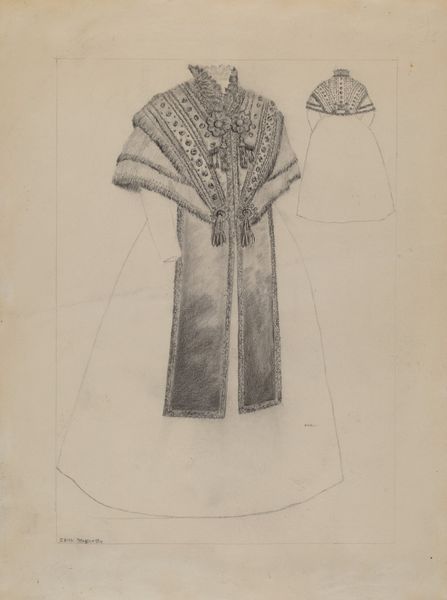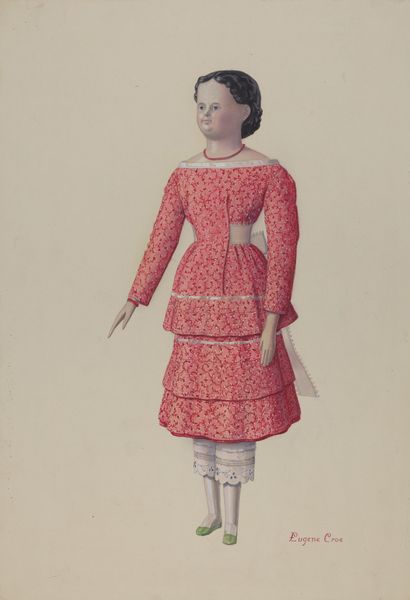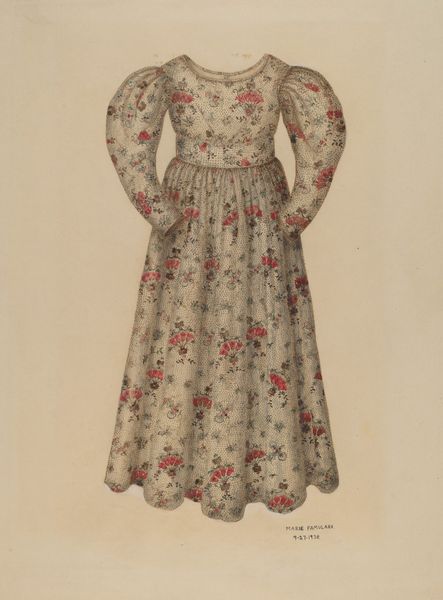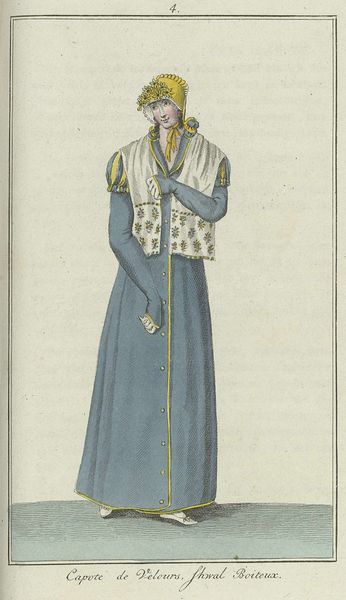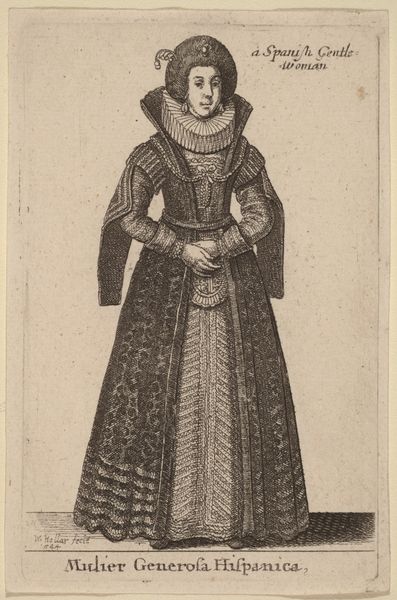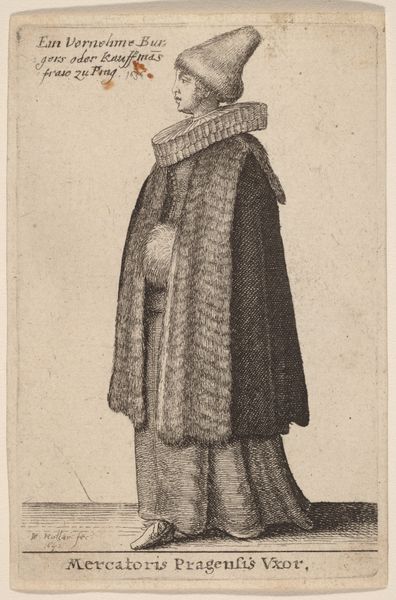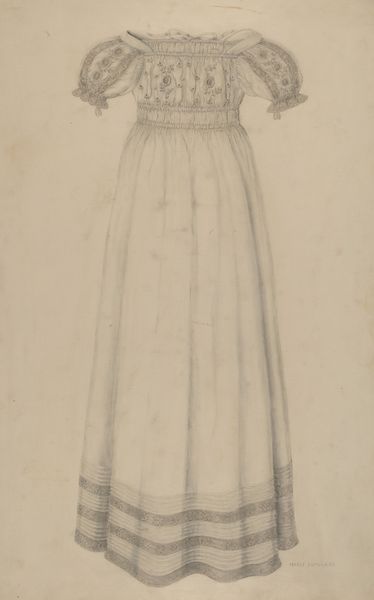
drawing, paper, pencil
#
pencil drawn
#
drawing
#
paper
#
pencil drawing
#
pencil
#
academic-art
Dimensions: overall: 45.8 x 35.5 cm (18 1/16 x 14 in.)
Copyright: National Gallery of Art: CC0 1.0
Editor: This is "Infant's Dress," a pencil drawing on paper by Marie Famularo, made around 1938. I'm really drawn to the delicate detail of the lace. What do you see in this piece? Curator: It's a drawing, yes, but let's consider it more broadly. Look at it as a document of labor, the product of potentially hours spent meticulously rendering this object. We can also explore the dress itself, its social and economic implications. Who owned this dress, and what does its materiality say about their place in society during the Depression era? Editor: That's interesting! I hadn't thought about the dress as a representation of economic status. The drawing makes it look so precious. Curator: Exactly! Think about the context. The drawing may portray a reality that diverges from the lived experiences of many families in 1938. Is this dress perhaps a symbol of aspirational consumption? What kind of industries and class structures upheld the value assigned to these handcrafted materials? Editor: So, you’re less interested in it being art and more in its role as an object with socioeconomic meaning. Curator: I'm not dismissing it *as* art. Rather, by interrogating its means of production and materials, we uncover layers of meaning that transcend purely aesthetic appreciation. Consider the division of labor, the skills required, the cost… These aspects provide rich insight into the culture of its time. What kind of work might Famularo have done? Was drawing garments part of their paid labor or some type of design or craft? Editor: I see what you mean. Focusing on the materiality and production helps connect the image to its historical and social context in a more tangible way. Curator: Precisely. The 'art' lies not just in the final product but in understanding the whole process – from the source of materials to its eventual consumption, its role within the sphere of daily life, and its representation of economic circumstances. It enriches our appreciation beyond just visual elements. Editor: Thanks! It changed how I will look at images from now on.
Comments
No comments
Be the first to comment and join the conversation on the ultimate creative platform.

